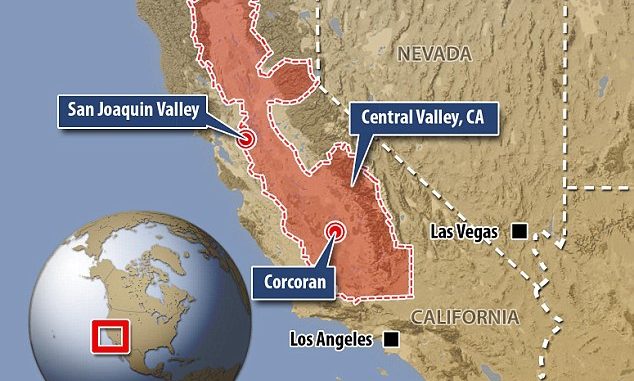
Land across vast areas of California is sinking faster than ever due to the over consumption of groundwater.
Sinking land, known as subsidence, has occurred for decades in California due to excessive groundwater pumping during drought conditions, but new data shows it is happening faster than before.

BYPASS THE CENSORS
Sign up to get unfiltered news delivered straight to your inbox.
You can unsubscribe any time. By subscribing you agree to our Terms of Use
Latest Video
An alarming report from NASA shows that California’s Central Valleys are subsiding as much as two inches (5cm) a month putting infrastructure on the surface at increasing risks of damage.
The findings of NASA’s Jet Propulsion Lab are based on satellite and aerial photos and measurements of land subsidence in the state.
RT reports: An area near Corcoran, in the Tulare basin, sank 13 inches in one recent eight-month period, according to the study conducted for the State Department of Water Resources. A stretch near the California Aqueduct, a key leg of the state canal and pipeline system that brings freshwater from the Sierra Nevada Mountains, sank 8 inches in just four months last year.
California drought causing valley land to sink. Info: http://t.co/QVDFG7ioza #EarthRightNow #CAdrought pic.twitter.com/4cp6vGvYWl
— NASA JPL (@NASAJPL) August 20, 2015
The problem is not limited to the San Joaquin Valley, the most arid part of the Central Valley of California. Land near Arbuckle in Colusa County sank five inches during the last half of 2014, the NASA report said.
Heavy pumping of groundwater causes clay between water pockets to collapse and ground to sink. This may damage critical infrastructure and also makes it harder for groundwater reservoirs to replenish. It may also hinder water from flowing through its natural underground pathways.
“Roads can be broken by fissures, pipelines have been exhumed, and the slope of the land can be altered, changing drainage patterns,” the NASA report warns.
Groundwater consumption remains at a historic high amid the drought, while its levels are dropping to record lows of up to 100 feet below previous measurements, says Mark Cowin, head of the California Department of Water Resources.


